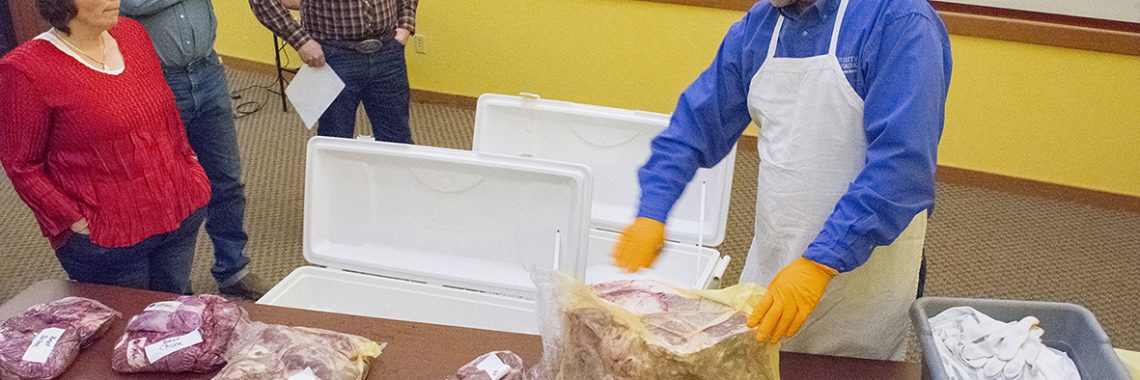Meat cutting, types of cuts and degree of doneness within meat are part of a session by the University of Wyoming Extension meats specialist at Wyoming-Utah Ag Days in Evanston.
The conference has more than 18 sessions Wednesday-Thursday, Jan. 30-31, at the Roundhouse. More information about all the sessions and conference is at bit.ly/WyoUtah2019.
Warrie Means, interim associate dean in the College of Agriculture and Natural Resources, will also cover the degree of doneness within meat, the types of marbling and the basic anatomy of the animal. His session is Jan. 31.
Meat cutting processes are now more driven by muscle characteristics than they used to be, said Means, an associate professor for meat science and food technology in the Department of Animal Science.
With a large interest in knowing where food comes from, understanding meat cutting and how to do it is becoming increasingly important, he said.
“We need to educate people more on the conversion of muscle to meat,” Means said.
Modern cuts
Modern cuts of meat aren’t necessarily new but the trend of the meat cut has become increasingly popular, said Means.
He said the flat iron steak in beef might be considered a modern cut. The cut is in the front end of the beef carcass and is very labor intensive to get out. Once the connective tissue is removed, the meat is very tender and has characteristics of steak rather than a chuck roast.
Modern beef cuts also include bone in rib, boneless ribeye, boneless flat cut roast, point cut boneless brisket, porterhouse steak, boneless strip loin and a top sirloin butt center-cut seamed on the dorsal side.
A few pork cuts that might be considered modern are country style ribs, blade chop, ribeye chop, T-bone chop, porterhouse chop and sirloin chop.
For many years, the pork loin, from about the second rib back, was cut into chops. Cuts were created to bone stuff out about 20 years ago, said Means. This created cuts like baby-back ribs and country-style ribs.
“You see a lot more boneless muscle separation – easier to prepare, less waste, more consistency in the product,” Means said.
Some modern lamb cuts include frenched (exposed) to eye, foreshank, T-bone chops and volcano hind shank.
IMPS numbers
Means will discuss the numbers associated with different cuts of meat, referred to as the institutional meat purchase specifications (IMPS). IMPS provides a systematic way to identify meat cuts with a carcass, he said.
“Generally speaking, low numbers are anterior and high numbers are posterior,” Means said. “It is a way to identify a cut.”
For example, 114D is the beef chuck shoulder, top blade and can be cut as the flat iron steak, while 171G is the beef round, outside round rump.
All conference sessions are free and can be attended as they fit people’s schedules, but RSVPs are requested to be included in the free lunch sessions. Call 307-783-0570.





